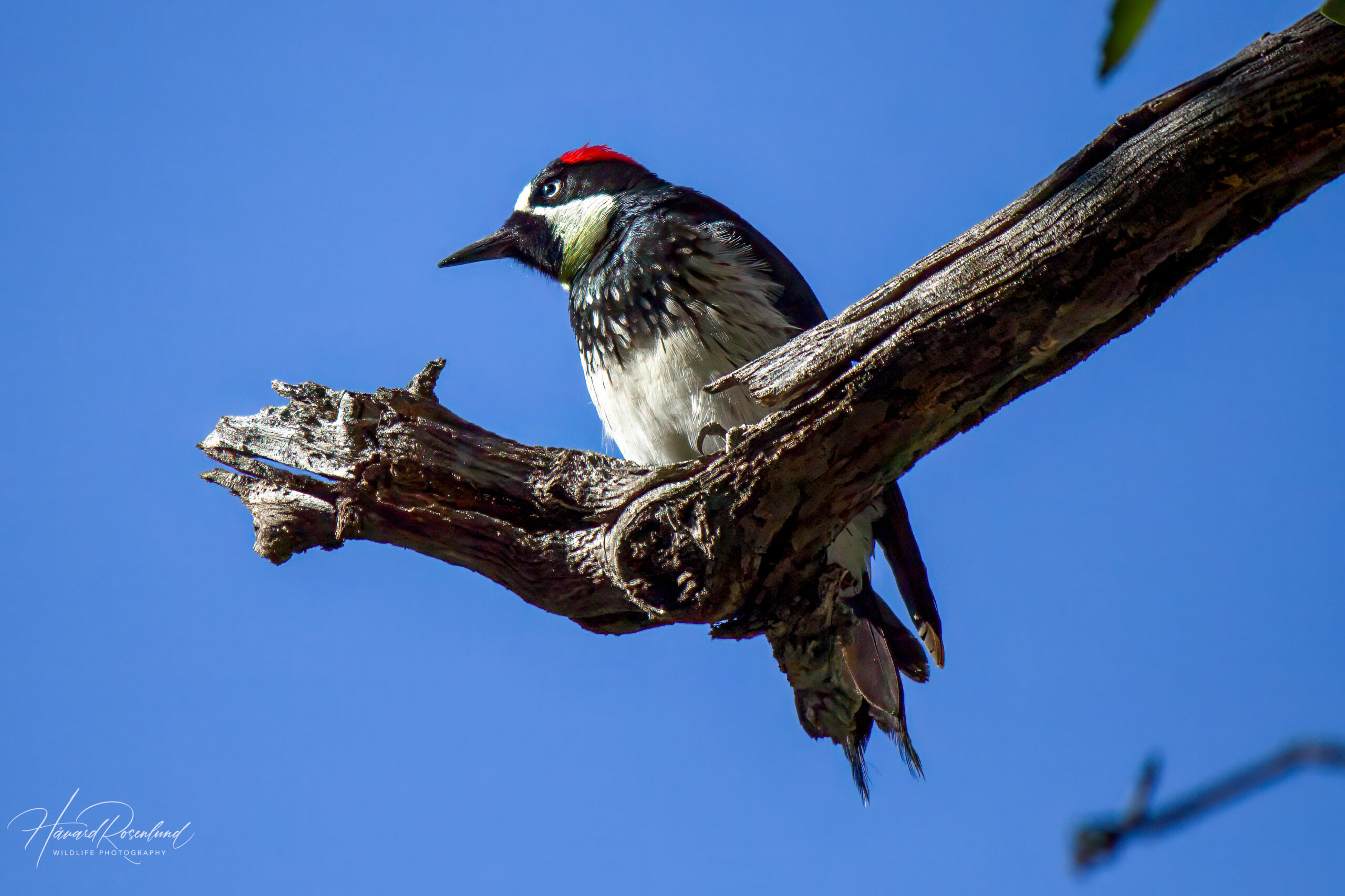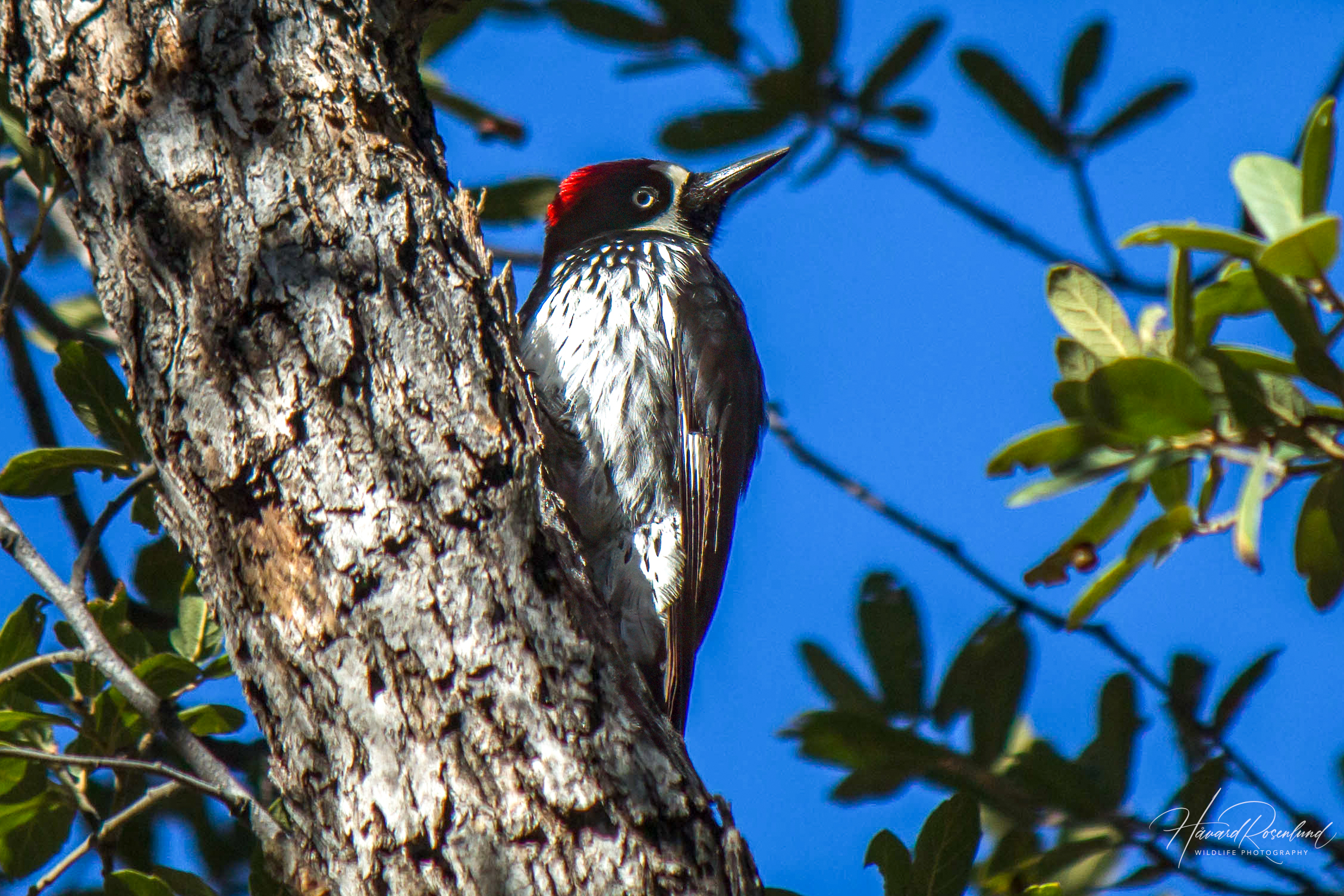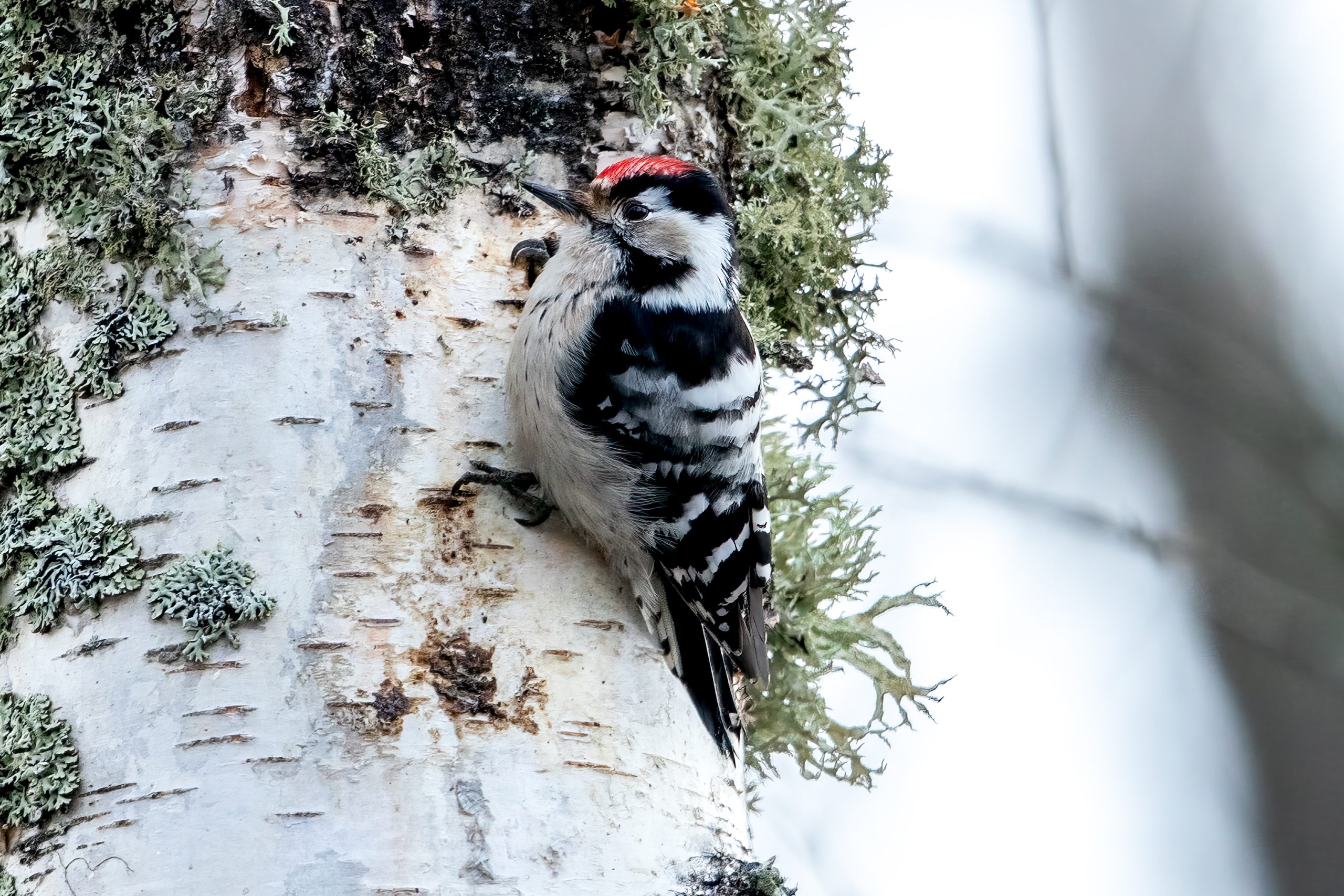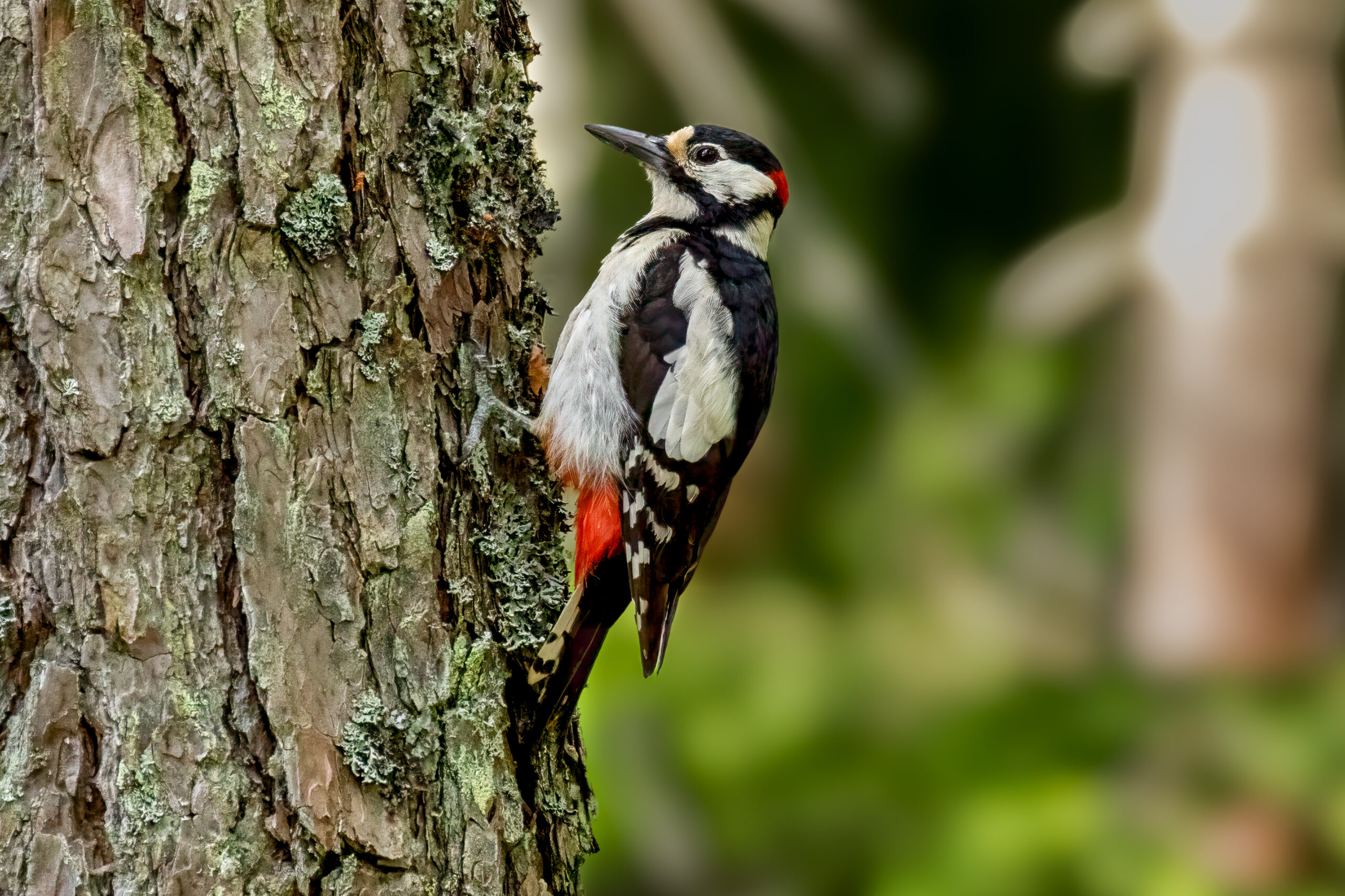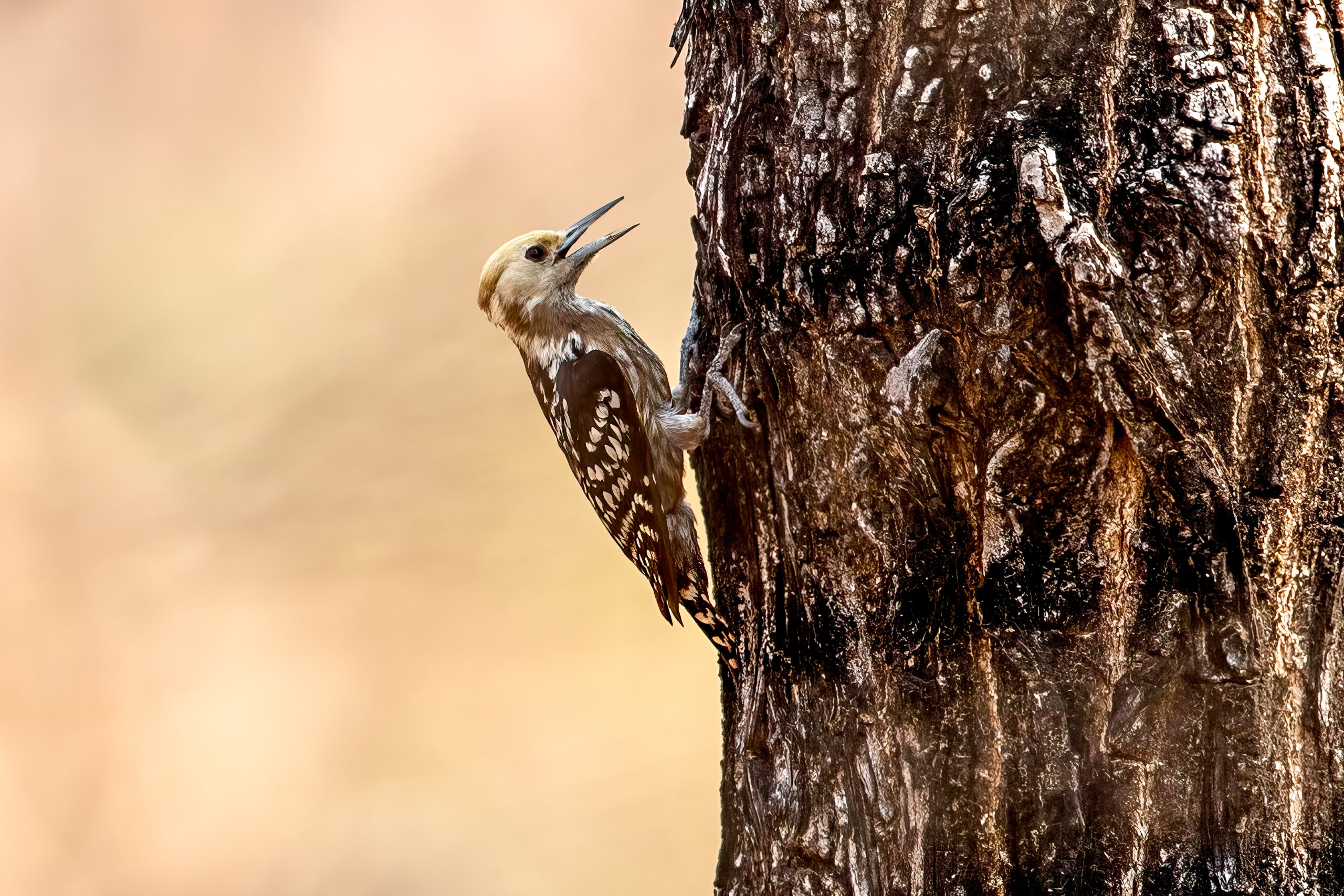Description
The acorn woodpecker (Melanerpes formicivorus) is a woodpecker found from the western United States through Mexico and into Central America, extending as far south as Colombia. It is easily distinguishable by its glossy black back, striking white face, and a prominent red cap. On males the red cap is usually extended across both crown and nape, whereas females only have red on the nape (except on the females of the Colombian subspecies, which lack any red coloration). The species measures between 19 to 23 centimeters (7.5 to 9 inches) in length with a wingspan reaching up to 43 centimeters (17 inches). Their notable white eyes contrast sharply against their dark plumage, setting them apart from other woodpecker species. The acorn woodpecker’s unique communal behavior and acorn storage habits are also key identifiers.
Diet & habitat
Inhabiting oak woodlands and mixed oak-pine forests, the acorn woodpecker’s diet is predominantly acorns. Their adaptability allows them to thrive in various environments, from sea level to mountainous regions, as long as oak trees are plentiful. They supplement their diet with insects, fruits, and occasionally sap. A remarkable aspect of their feeding behavior is the creation of “granaries” or storage trees, where they store acorns in holes drilled specifically for this purpose. These granaries can house thousands of acorns, serving as vital resources during food shortages.
Social behavior
Acorn woodpeckers exhibit an extraordinary social structure, characterized by their communal living and cooperative breeding. They live in large, extended family groups, engaging in cooperative care of the young and defense of their territory and granaries. These social groups are often composed of related individuals, and they demonstrate complex interactions, including joint foraging, communal nesting, and collective decision-making processes. Their social dynamics are also highlighted by acorn gathering and storage, where group members collaboratively maintain and defend their granaries against potential thieves, including other bird species and mammals. “Mock” battles, involving loud calls and display flights, are a method for resolving territorial disputes without physical conflict, showcasing their sophisticated social interactions.
Nesting
The breeding season spans from March to June. Unlike many bird species that form monogamous pairs, acorn woodpeckers engage in a polygynandrous breeding system, where multiple males and females form breeding coalitions within a single communal group. This cooperative breeding system is relatively rare among birds and underscores the highly social nature of these woodpeckers.
Nesting sites are chosen with great care, often utilizing cavities in trees that are either naturally occurring or excavated by the birds themselves. These cavities are reused over years and are fiercely defended from competitors. The interior of the nest is lined with wood chips, providing a soft bedding for the eggs and young chicks.
A single communal nest can contain a clutch of 3 to 16 eggs, the result of contributions from several females within the group. This communal approach to reproduction means that not only are the eggs shared within the nest, but so is the responsibility for incubation and chick-rearing. Both male and female acorn woodpeckers take turns incubating the eggs, a process that lasts approximately 11 to 14 days. The high level of cooperation among group members is also evident in the care of the fledglings, which leave the nest about 4 to 5 weeks after hatching. Post-fledging, juveniles continue to receive care and learn vital survival skills from the entire group, including how to forage and store acorns.
This cooperative breeding strategy not only enhances the survival rates of the offspring but also strengthens social bonds within the group. It’s a remarkable adaptation that allows acorn woodpeckers to efficiently utilize resources and defend their territories and granaries against potential threats.
Status
The acorn woodpecker faces threats from habitat loss and changes to oak woodland ecosystems. However, their broad distribution and substantial population size have contributed to a stable population trend and the species is listed as least concern on the IUCN Red List. Conservation efforts are directed towards preserving oak woodlands and ensuring the sustainability of their ecosystems.




